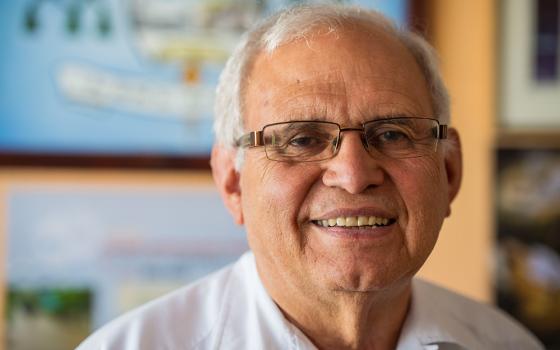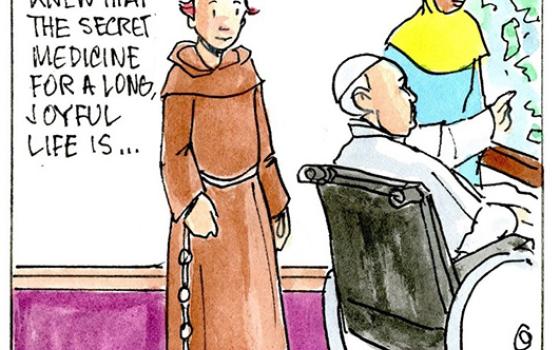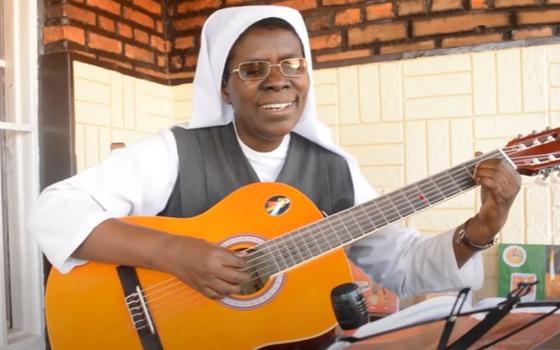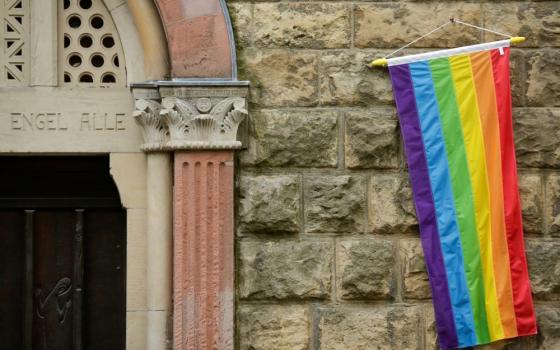
In 1917 the Mexican Constitutional Congress adopted a new constitution. It confirmed the separation of church and state first decreed in the 1857 constitution, returned subsoil rights to the government from ownership and control by foreign corporations, established the basis for secular education, and provided for land reforms. Five articles restricted the power and liberty of the Catholic church. These forbade public worship outside of churches, restricted the church’s right to own property, closed monasteries, deprived clergy of civil rights, forbade the wearing of clerical or religious garb, and banned clergy from criticizing the government or commenting on public affairs in the press.
The rigid enforcement of these laws by President Plutarco Elías Calles led to the civil war known as the Cristero War, 1926-29.
Although this tragic conflict may be unknown by this name to many in the United States, many Catholics do know the story of Jesuit Fr. Miguel Pro (1891-1927) who was shot in November 1927 on the order of Calles under the pretext that Pro was part of a plot to assassinate former President Alvaro Obregón. The church canonized Pro in 1988. Calles ordered that the photographs of his killing were to be spread far and wide to discourage the Cristeros; it had the opposite effect.
The history of Mexico is complex and the Catholic church’s place therein is complicated by its wealth and political influence, which stemmed from large land holdings and control over education. This was true in Mexico in 1857 and reiterated in 1917.
Obregón, who was president 1920-24, was not a friend of the church but did little to enforce the constitution and caused little or no upset. But when Calles, a fierce anti-Catholic, became president, he was determined to enforce the law uniformly throughout the land and added specific penalties to infractions. Catholic organizations began to resist. On July 26, 1926, the Mexican episcopate suspended worship and Catholic organizations began a boycott. Federal troops began attacking churches, killing armed laypeople as well as priests. Uprisings began in earnest and this disorganized conflict was the beginning of the Cristero War.
A film about this era has dominated the Mexican box office since it opened April 20, and that film, which is in English, opens in the United States June 1. In many respects the film accurately depicts elements of the Cristero War and key personalities who played a part in it, but questions remain that may send thoughtful viewers straight to the Internet or library.
The original name of the film was “Cristiada” but changed to “For Greater Glory,” possibly for the U.S. audience.
The film opens by introducing us to retired Gen. Enrique Gorostieta (Andy Garcia), a religious skeptic. His wife (an almost unrecognizable Eva Longoria) implores him to allow their daughters to continue their religious education in the face of Calles’ crackdown on the church. He loves his wife and humors her. Gorostieta owns a soap manufacturing company and he is growing bored. The Cristeros recruit him to organize their revolt against the government.
Next we are introduced to the key characters. Father Christopher (Peter O’Toole as a fusion of several characters) is an elderly missionary who refuses to leave when Calles orders all foreign priests out of Mexico. He takes on 13-year-old José Luis Sánchez (Mauricio Kuri) as an altar boy. The priest inspires José, who leaves mischief behind to serve the parish. Anacleto González Flores (Eduardo Verástegui) is a lawyer and an advocate of nonviolence who continually questions the morality of taking up arms. Victoriano “El Catorce” Ramírez (Oscar Isaac) heads one of the guerilla groups. Adriana (Catalina Sandino Moreno as a fusion of characters, too) belongs to the women’s group that assists the Cristeros fighters in an intricate underground network. Dwight Morrow (Bruce Greenwood) is the U.S. ambassador who initially promises airplanes and weapons to Calles (Rubén Blades) to negotiate peace so that the U.S. can have access to oil concessions recently lost in the 1917 constitution. Calles is antichurch, calculating, cruel and calm.
Knowing that the film is for the most part historically accurate makes it easier to enjoy. “For Greater Glory” will move the audience and perhaps inspire them.
What the film gets right is the characters and what they represent. For example, the question of violence versus nonviolence is raised over and over again, though most advocates of nonviolence eventually joined in battle.
José’s death is the most powerful moment in the film, as is Gorostieta’s sorrow. The acting of young Kuri is compelling. Pope Benedict XVI beatified José, Gonzalez Flores and 11 others -- including two Knights of Columbus -- in 2005. Altogether, nine Mexican Knights of Columbus, clergy and lay, from the Cristero War period have been beatified. In the film, Morrow (who was, by the way, father of Anne Morrow Lindbergh) complains about the Knights, who were protesting the mistreatment of Catholics in Mexico at the time and gave aid to the thousands of Cristeros who fled Mexico.
The film shows the fighters’ sorrow at the silence of the Vatican at the plight of the Mexican church and the murder of so many. What is not mentioned is that the Mexican bishops themselves were divided.
 Both sides in the war committed atrocities and at least 80,000 people died. The film glosses over one of the worst atrocities. Fr. Reyes Vega (Santiago Cabrera) and his brother, also a priest, led a raid on a passenger train carrying a shipment of money to the government. Vega’s brother is killed, and Vega has a railroad car that is filled with innocent passengers doused with gasoline and set on fire. The historical record is clear on Vega’s complicity with this brutality, but the film seems to let the priest off the hook by showing him ask another fighter to check to make sure no people are in the car.
Both sides in the war committed atrocities and at least 80,000 people died. The film glosses over one of the worst atrocities. Fr. Reyes Vega (Santiago Cabrera) and his brother, also a priest, led a raid on a passenger train carrying a shipment of money to the government. Vega’s brother is killed, and Vega has a railroad car that is filled with innocent passengers doused with gasoline and set on fire. The historical record is clear on Vega’s complicity with this brutality, but the film seems to let the priest off the hook by showing him ask another fighter to check to make sure no people are in the car.
“For Greater Glory” is a man’s film and it shows. I think the filmmakers cast this film by hiring every Mexican male telenovela star they could find. Garcia, Kuri, Blades and Isaac make the film work and their performances are noteworthy.
First-time director Dean Wright, a veteran visual effects master, explained that with such a complex story it worked better to fuse the story of the women into the character of Adriana. However, in reality, by the war’s end more than 25,000 women were members of the “Feminine Brigades of St. Joan of Arc,” acting as couriers, as nurses and in many other roles.
“For Greater Glory” opens with a poem that goes something like this: “Between light and dark, heaven and earth, lies only my heart.” The Cristero War remains a complex time in Mexican history, and the film, while honoring some as heroes, shows that it is no easy matter when love of God, of country, of family, and of justice and right tangle.
Ideologically, the film ends solidly on the side of the Cristeros.
What the story means in today’s political culture will most likely be roundly debated. One source said that political differences in Mexico today are resolved at the ballot box rather than war. However, it is hard to watch this film and not think of the hundreds of women who have been, and continue to be, murdered or disappeared from Cuidad Juárez, and of the anarchical drug violence that begs for resolution but the response from all quarters is silence and acquiescence and a little sporadic retaliation.
[Sr. Rose Pacatte is a Daughter of St. Paul, director of the Pauline Center for Media Studies in Los Angeles, and reviews movies for NCR.]




